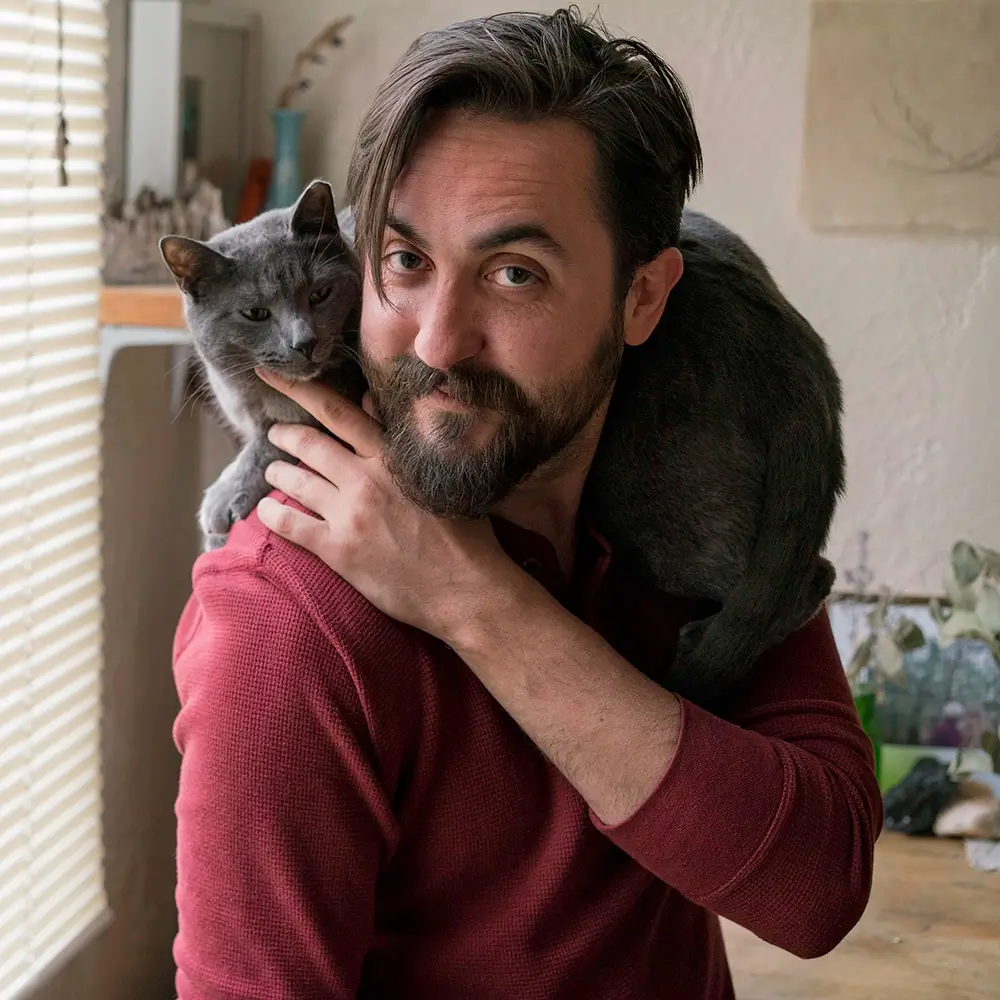I'm an interdisciplinary artist and writer based in the southeast. My practice navigates acceptance,
contention, and failure with what it means to be present. I shift between using a large-format view
camera for documentary style storytelling and a wooden pinhole box camera exposing film for the
duration of a gesture, ritual, or natural occurrence. My non-photographic media sometimes
incorporates ready-made, labor related objects such as parachutes, flashlights, and reflectors to
explore parallels of search and rescue with mental illness and recovery. As someone who has lost
loved ones to substance abuse, and who is personally now on my own path of recovery, I embrace
my art practice as a means of self inquiry, healing, and reconciling with the human condition.
When I’m not making new work, or spending time with my animals, I split my days between
teaching, volunteering at recovery treatment centers, and working on a second masters degree in
Art Therapy. These days I’m grateful for good rest, the light that finds us, and shared time with
others.
In My Father’s House:
While visiting my parents during my college years, I photographed a napkin on which my father had
written two Elvis song titles, ‘In My Father’s House’ and ‘I Was the One.’ This small note along with
others gave me insight to the private introspections of my father, the intimacy of which motivated
me to investigate our relationship through the medium of photography. I expounded upon this by
documenting various elements of our home and eventually asking others in my family to sit for
portraits and to participate in constructed narratives. The majority of these images were captured
using a large-format camera, requiring a slower, more meditative process of photographing my
family members while also conveying the quiet tone of our relationships at that time.
I had unknowingly started a project with an ending already in motion. Three years later, my father
would be diagnosed with terminal cancer of the liver and lungs which had already spread to his
bones. He was with us for seven days after the diagnosis. In his last days of consciousness, my father
began to lose touch with the world and as a family we leaned into a rare embrace of vulnerability
and affection. We played his favorite songs on the radio and whispered words in his ear we hadn’t
said in such close proximity before. In those final hours, I grappled with my own disconnect as I
slipped between the roles of active participant and documentarian. These images blur the lines of
what I recall, what I want to admit and perhaps what I wanted to see.
